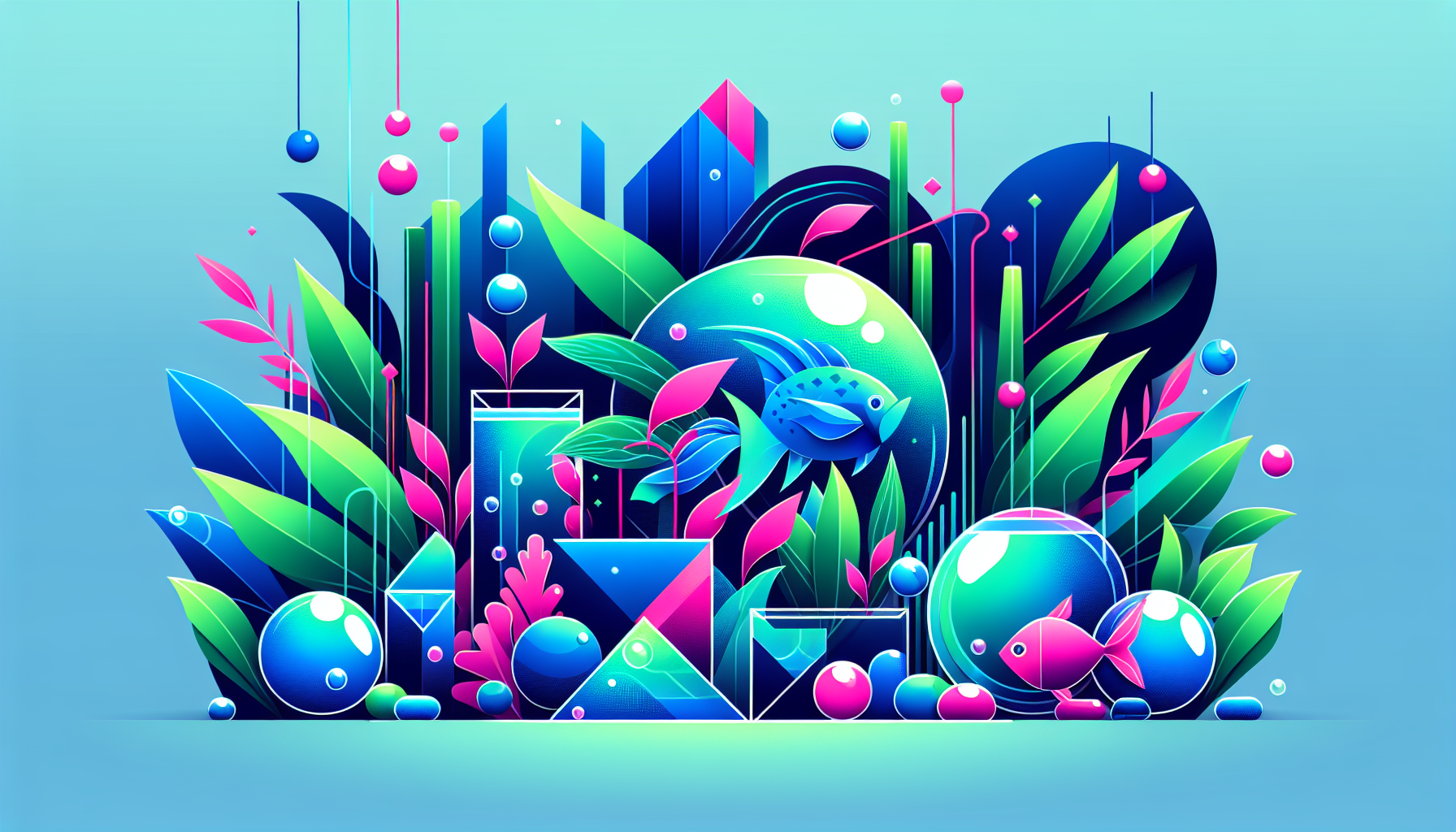The Complete Beginner’s Guide to Aquascaping: Setup, Plants & Maintenance
Ready to transform your aquarium into an underwater masterpiece? Aquascaping is a captivating blend of science, design, and gardening that allows you to create stunning aquatic landscapes. Whether you’re just starting out or looking to refine your skills, this comprehensive guide covers everything you need to know—from basic tank setups to choosing the best plants, popular aquascaping styles, and crucial maintenance tips.
What is Aquascaping?
Aquascaping is the art of arranging aquatic plants, rocks, stones, driftwood, and other materials in an aquarium to create visually appealing landscapes. Think of it as underwater gardening that combines creativity, patience, and a touch of science. Besides boosting the aesthetic value of an aquarium, aquascaping can foster a balanced ecosystem for your fish and invertebrates.
Getting Started: The Basics of Aquascaping
Essential Equipment
- Aquarium Tank – Choose a size that suits your space and budget (starting from 10 gallons is recommended for beginners).
- Lighting System – Good lighting is vital for plant growth and to bring out the colors in your aquascape.
- Filtration – A reliable filter maintains water quality and clarity.
- CO2 System (optional) – Pressurized CO2 helps many aquatic plants thrive but is not necessary for all setups.
- Heater (if required) – Some tropical plants or fish require a stable, warm environment.
- Aquascaping Tools – Tweezers, scissors, and substrate spatulas help with precise planting and aquascape maintenance.
Choosing a Substrate
Your choice of substrate directly impacts plant health and root development. Consider nutrient-rich soil substrates like ADA Aqua Soil, which help aquatic plants root and thrive. For more details on substrates, check out our guide: Best Substrates for Aquascaping.
Planning Your Layout
Sketch out your vision before you begin. Common aquascaping layout techniques include:
- Rule of Thirds – Position focal points off-center for a natural look.
- Golden Ratio – Use a 1:1.618 ratio to space elements harmoniously.
- Foreground, Midground, Background – Layer plants and hardscape to add depth to your aquascape.
Choosing the Best Plants for Beginners
The right selection of aquatic plants makes maintenance easier and ensures your aquascape thrives. Start with hardy, low-maintenance species such as:
- Anubias: Tolerant of low light and prefers to be attached to rocks or wood.
- Java Fern: Resilient and adapts to a range of conditions.
- Cryptocoryne: Offers a variety of leaf shapes and colors. Easy to care for.
- Java Moss: Ideal for covering hardscape and creating a lush, natural look.
- Amazon Sword: A classic background plant for larger tanks.
For a deeper dive into plant options, see our post: Top 10 Easy Plants for Aquascaping Beginners.
Popular Aquascaping Styles
Nature Aquarium
Popularized by Takashi Amano, this style imitates natural landscapes—forests, mountains, or waterfalls—using rocks, driftwood, and vibrant plants.
Iwagumi
This minimalist, Japanese-inspired style uses carefully placed stones (usually three or five) and a single type of carpeting plant to create serene rock gardens.
Dutch Style
Characterized by lush, tiered rows of colorful plants, the Dutch style resembles a terrestrial garden more than an underwater world.
Jungle Style
As the name suggests, this style is dense and wild, using a variety of plant species for a bold, untamed look.
Step-By-Step Aquascaping Setup
- Preparation: Gather your equipment, rinse substrate and hardscape materials to remove dust and debris.
- Substrate: Add a foundation layer and slope it from back to front for depth.
- Hardscape Placement: Arrange rocks, driftwood, or other decorative elements to form the backbone of your aquascape.
- Planting: Moisten the substrate and use aquascaping tweezers to insert plants at different zones (foreground, midground, background).
- Filling with Water: Fill the tank slowly to prevent disturbing your layout—use a plate or plastic sheet to diffuse water flow.
- Start Equipment: Turn on filters, heaters, and lighting. Add water conditioner and beneficial bacteria if required.
- Cycle the Aquarium: Run your tank without fish for 4–6 weeks so beneficial bacteria can stabilize the ecosystem. Monitor ammonia, nitrite, and nitrate levels regularly.
Maintenance Tips for a Healthy Aquascape
- Regular Water Changes: Replace 20–30% of the water weekly to maintain water quality and reduce algae.
- Trimming Plants: Prune overgrown stems to preserve your aquascape’s design and stimulate healthier growth.
- Monitor Algae: Control light duration (6–8 hours/day) and avoid overfeeding fish to prevent algae outbreaks.
- Check Equipment: Ensure filters, heaters, and CO2 systems are functioning properly.
- Fertilization: Use liquid or root fertilizers as needed, especially if your plants show signs of nutrient deficiency.
Learn more about keeping your tank spotless in our detailed article: 10 Essential Aquascape Maintenance Tips.
Common Beginner Mistakes (and How to Avoid Them)
- Skipping the tank cycling process—results in unhealthy environments for plants and fish.
- Overcrowding the tank with plants or decorations—leads to stunted growth and potential water flow blockages.
- Neglecting regular maintenance—causes algae issues and declining plant health.
- Choosing difficult-to-grow plants as a beginner—start with hardy varieties before tackling advanced species.
Frequently Asked Questions
How much does it cost to start aquascaping?
Starting a basic aquascape with a 10-gallon tank may cost $100–$300, depending on chosen equipment, plants, and materials.
Can I add fish immediately after setting up an aquascape?
No. Always cycle your tank first—introduce fish only when water tests show ammonia and nitrite at zero.
Can aquascaping be done without CO2 injection?
Absolutely! Many beginner-friendly plants thrive without added CO2. You can always upgrade later if desired.
Start Your Aquascaping Journey Today!
Dive into the world of aquascaping and transform your aquarium into a breathtaking aquatic landscape. If you’re ready for your first project, explore our Aquascaping Ideas for Beginners or join the conversation with fellow enthusiasts on our Community Forum.
Have more questions? Drop a comment below, or check out our other resources to keep learning and growing your skills on Aquascaping Academy!



